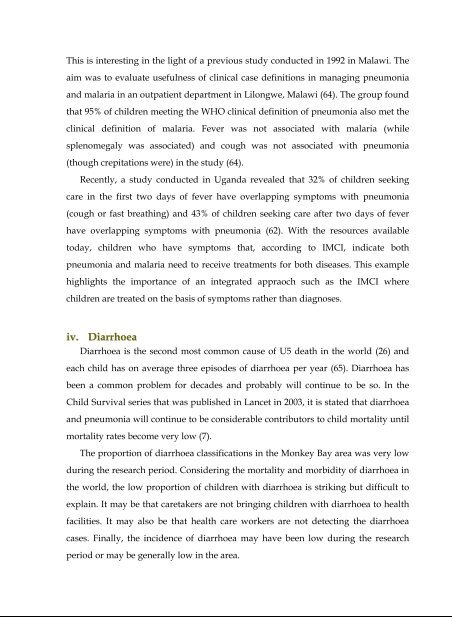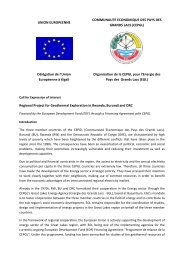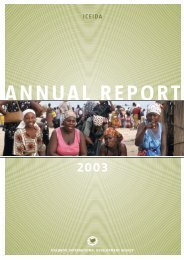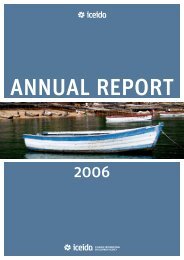The Implementation of Integrated Management of Childhood Illness ...
The Implementation of Integrated Management of Childhood Illness ...
The Implementation of Integrated Management of Childhood Illness ...
Create successful ePaper yourself
Turn your PDF publications into a flip-book with our unique Google optimized e-Paper software.
This is interesting in the light <strong>of</strong> a previous study conducted in 1992 in Malawi. <strong>The</strong><br />
aim was to evaluate usefulness <strong>of</strong> clinical case definitions in managing pneumonia<br />
and malaria in an outpatient department in Lilongwe, Malawi (64). <strong>The</strong> group found<br />
that 95% <strong>of</strong> children meeting the WHO clinical definition <strong>of</strong> pneumonia also met the<br />
clinical definition <strong>of</strong> malaria. Fever was not associated with malaria (while<br />
splenomegaly was associated) and cough was not associated with pneumonia<br />
(though crepitations were) in the study (64).<br />
Recently, a study conducted in Uganda revealed that 32% <strong>of</strong> children seeking<br />
care in the first two days <strong>of</strong> fever have overlapping symptoms with pneumonia<br />
(cough or fast breathing) and 43% <strong>of</strong> children seeking care after two days <strong>of</strong> fever<br />
have overlapping symptoms with pneumonia (62). With the resources available<br />
today, children who have symptoms that, according to IMCI, indicate both<br />
pneumonia and malaria need to receive treatments for both diseases. This example<br />
highlights the importance <strong>of</strong> an integrated appraoch such as the IMCI where<br />
children are treated on the basis <strong>of</strong> symptoms rather than diagnoses.<br />
iv. Diarrhoeaa<br />
Diarrhoea is the second most common cause <strong>of</strong> U5 death in the world (26) and<br />
each child has on average three episodes <strong>of</strong> diarrhoea per year (65). Diarrhoea has<br />
been a common problem for decades and probably will continue to be so. In the<br />
Child Survival series that was published in Lancet in 2003, it is stated that diarrhoea<br />
and pneumonia will continue to be considerable contributors to child mortality until<br />
mortality rates become very low (7).<br />
<strong>The</strong> proportion <strong>of</strong> diarrhoea classifications in the Monkey Bay area was very low<br />
during the research period. Considering the mortality and morbidity <strong>of</strong> diarrhoea in<br />
the world, the low proportion <strong>of</strong> children with diarrhoea is striking but difficult to<br />
explain. It may be that caretakers are not bringing children with diarrhoea to health<br />
facilities. It may also be that health care workers are not detecting the diarrhoea<br />
cases. Finally, the incidence <strong>of</strong> diarrhoea may have been low during the research<br />
period or may be generally low in the area.<br />
45
















